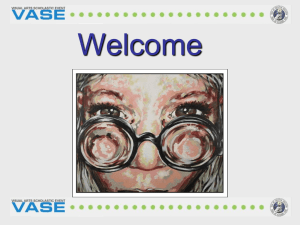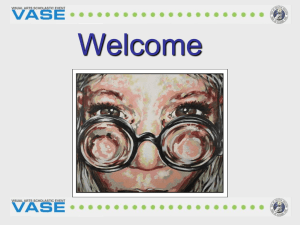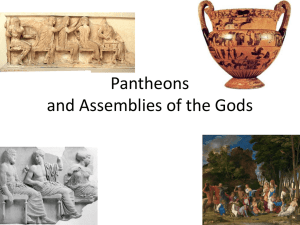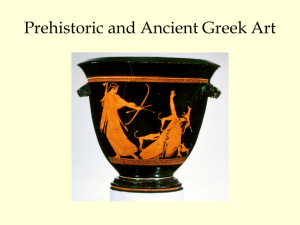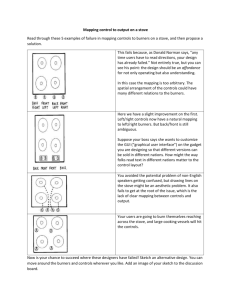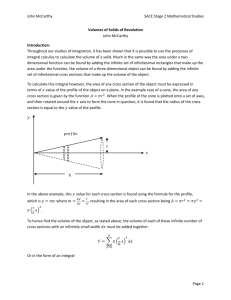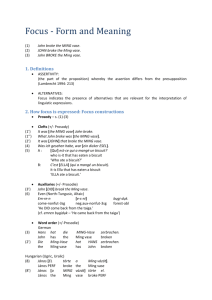CumpaKevin_MuseumPaper2
advertisement
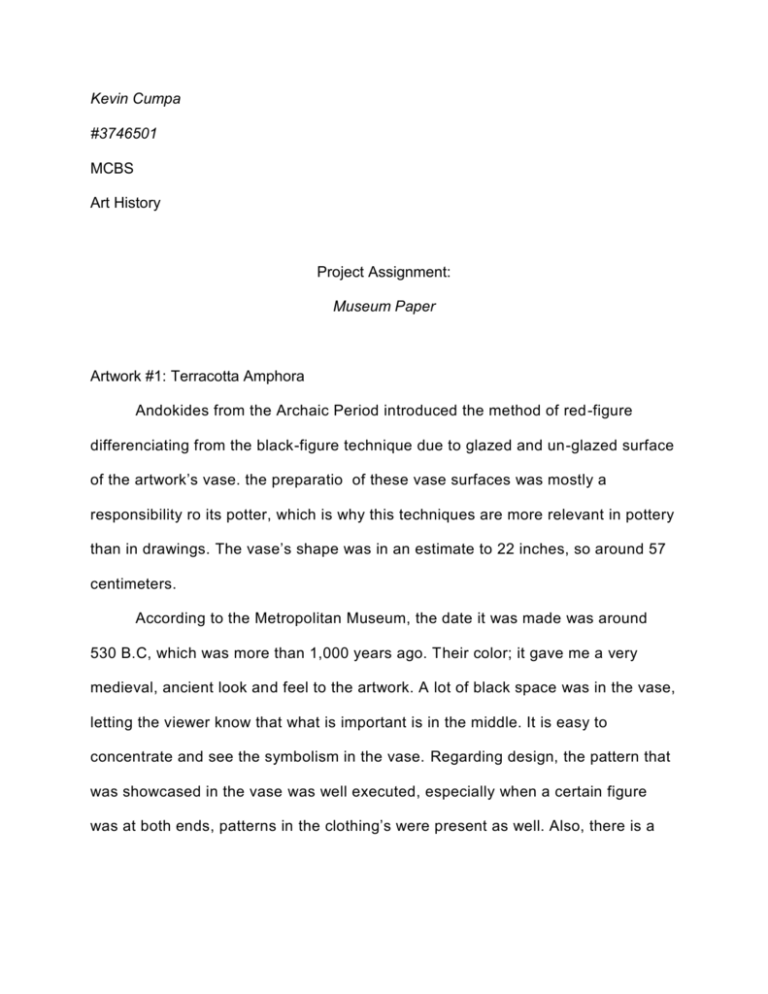
Kevin Cumpa #3746501 MCBS Art History Project Assignment: Museum Paper Artwork #1: Terracotta Amphora Andokides from the Archaic Period introduced the method of red -figure differenciating from the black-figure technique due to glazed and un-glazed surface of the artwork’s vase. the preparatio of these vase surfaces was mostly a responsibility ro its potter, which is why this techniques are more relevant in pottery than in drawings. The vase’s shape was in an estimate to 22 inches, so around 57 centimeters. According to the Metropolitan Museum, the date it was made was around 530 B.C, which was more than 1,000 years ago. Their color; it gave me a very medieval, ancient look and feel to the artwork. A lot of black space was in the vase, letting the viewer know that what is important is in the middle. It is easy to concentrate and see the symbolism in the vase. Regarding design, the pattern that was showcased in the vase was well executed, especially when a certain figure was at both ends, patterns in the clothing’s were present as well. Also, there is a decent amount of repetition involving the textures in the vase, like a spear -like shape seen throughout the artwork. Talking about symbolism, the subject of this drawing or vase was about Herakles and Apollo fight or competing over a tripod from Delphic which was “central” to Apollo’s’ Oracle. In the edges, Illustrated is Dionysos, the god of wine. Lastly, in the vases’s lip was Herakles and the Nemean Lion. Artwork#2: Stove This Attribute was actually created by three people, David II Pfau (1644– 1702), Hans Heinrich III Pfau (1672–1714), Tobias Stimmer (1539–1584), and Christoph Murer (1558–1614); these fine artist and distributors to this art demonstrated a fancy stove, literally. The Metropolitan Museum stated that this artpiece took a year to make! it was made from 1684 to 1685. This colorful, large, ceramic stove is enormous, with the height of 124 in. by a width of 82 inches. it was made for a “Rich Room” in Johann Gaudenz von Capol’s Household. these specific stoves privided heat for the winter days. it provided it white tiles that continuously made a heat reflection, causing it to spread. This stove was made in Winterthur, an important Swiss center for faience, which is a glazed ceramic texture used in tin materials. The texture is very beautiful, it has images and pop outs in its design, symbolizing a 3D e ffect in a stove concept design. it looks like a castle’s tower, very unique and aesthetic. The colors were great, it has all white with a hint of a goldish color. Next, it’s really nice that it involved repitition, in each “section” it involved different bible events. It was interesting how much emphasis this stove had, to the fact that it is only made in “Rich Rooms” like it seemed to be so importsnt! It really was, because it was like a non-electric heater. Artwork Artwork#3: Pala Colonna (or Virgin and Child Enthroned with Saints) The painting was by Raphael Sanzio (1483–1520). it was made in 1504, the Dimensions of the image were: “Main panel, overall 67 7/8 x 67 7/8 in. (172.4 x 172.4 cm), painted surface 66 3/4 x 66 1/2 in. (169.5 x 168.9 cm); lunette, overall 29 1/2 x 70 7/8 in. (74.9 x 180 cm), painted surface 25 1/2 x 67 1/2 in. (64.8 x 171.5 cm)” (Oxford, 2015) This painting is very church related, The Metropolitan Museum illustrated that: “Raphael painted this altarpiece around 1504/5 for the small Franciscan convent of Sant' Antonio in Perugia. It hung in a part of the church reserved for the nuns, who are thought to have insisted on some of its conservative features, such as the elaborately clothed Christ’s Child. By contrast, the grave male saints are among the earliest evidence of Raphael’s study of the work of Leonardo da Vinci and Fra Bartolomeo in Florence.” There was a variety of colors and clothes used in this painting, it makes the viewers think that there is so much going on. It seems to be very important to the people of the church, giving the painting a religious emphasis or higher meaning, due to its purpose or subject. The form of the painting is quite unique and pleasing, because not many paintings are designed that way. The textures, colors, and all things together make it stick out, thus becoming more vivid to the audience. References Grove Art Online. (n.d.). Retrieved March 15, 2015, from http://www.oxfordartonline.com/subscriber/article/img/grove/art/F019544?q=paintings&s earch=quick&type=image&pos=22&_start=1#firsthit Pfau, D., Pfau, H., Stimmer, T., & Murer, C. (n.d.). Stove. Retrieved March 15, 2015, from http://www.metmuseum.org/collection/the-collection-online/search/191259 Terracotta Amphora. (n.d.). Retrieved from http://www.metmuseum.org/collection/the-collectiononline/search/255154?rpp=30&pg=1&rndkey=20150315&ft=*&who=Andokides+Painter $Andokides+Painter&pos=1&imgno=0&tabname=label
